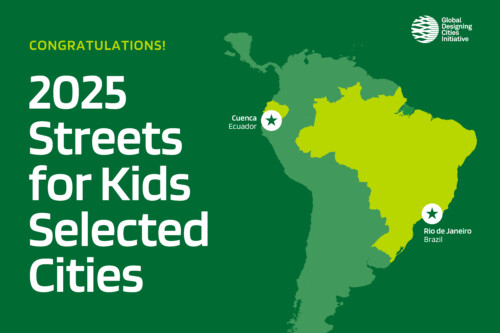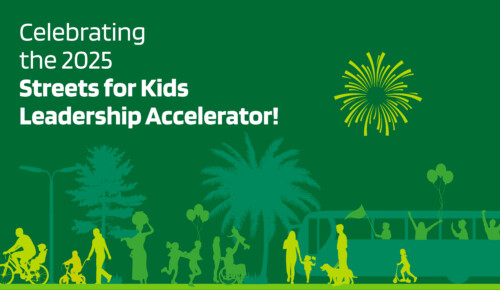On April 7, 2025, GDCI announced the ten cities to join the second round of the Streets for Kids Leadership Accelerator. We’re excited to bring together Bello, Bogotá, and Cali from Colombia, Cuenca, Daule, and Guayaquil from Ecuador, and Fortaleza, Mogi das Cruzes, Rio de Janeiro, and Salvador from Brazil. Earlier this year, GDCI announced a new round of the Leadership Accelerator for city teams in Brazil, Colombia, and Ecuador. This cycle focuses on scaling up existing initiatives, building capacity and technical knowledge, expanding local partnerships, and developing projects, processes, policies, and programs to achieve an even greater impact on the lives of kids in their cities. These teams are already making big strides in promoting the safety, health, and well-being of children and their caregivers on their streets, and we’re excited to support them in developing their bold visions for the future.
Learn more about the ten cities to scale up their Streets for Kids in 2025:
The Streets for Kids Leadership Accelerator is an online capacity-building program that brings together a selected cohort of city teams to learn from global experts, get inspired by international case studies and best practices, and develop their proposals to lead and implement better streets for kids in their cities. The accelerator builds upon the Streets for Kids program experience of supporting over 40 cities worldwide through technical assistance and capacity building. It follows the international, award-winning Designing Streets for Kids design guidance as well as the recently launched “How to Engage Kids in Street Design” and “How to Evaluate Street Transformations near Schools” booklets.













